
Snowboards are boards where the user places both feet, usually secured, to the same board. The board itself is wider than most skis, with the ability to glide on snow. Snowboards widths are between 6 and 12 inches or 15 to 30 centimeters. Snowboards are differentiated from monoskis by the stance of the user. In monoskiing, the user stands with feet inline with direction of travel, whereas in snowboarding, users stand with feet transverse to the longitude of the board. Users of such equipment may be referred to as snowboarders. Commercial snowboards generally require extra equipment, such as bindings and special boots which help secure both feet of a snowboarder, who generally ride in an upright position. These types of boards are commonly used by people at ski hills, mountains, backcountry, or resorts for leisure, entertainment, and competitive purposes in the activity called snowboarding.

Alpine skiing, or downhill skiing, is the pastime of sliding down snow-covered slopes on skis with fixed-heel bindings, unlike other types of skiing, which use skis with free-heel bindings. Whether for recreation or for sport, it is typically practiced at ski resorts, which provide such services as ski lifts, artificial snow making, snow grooming, restaurants, and ski patrol.
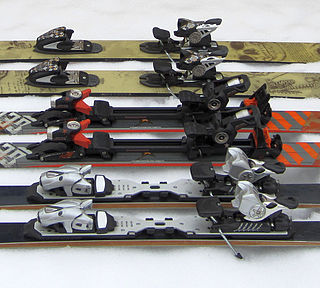
A ski binding is a device that connects a ski boot to the ski. Before the 1933 invention of ski lifts, skiers went uphill and down and cross-country on the same gear. As ski lifts became more prevalent, skis—and their bindings—became increasingly specialized, differentiated between alpine (downhill) and Nordic styles of skiing. Until the point of divergence in the mid-20th century, bindings held the toe of a flexible, leather boot against the ski and allowed the heel to rise off the ski, typically with a form of strap or cable around the heel.
The parallel turn in alpine skiing is a method for turning which rolls the ski onto one edge, allowing it to bend into an arc. Thus bent, the ski follows the turn without sliding. It contrasts with earlier techniques such as the stem Christie, which slides the ski outward from the body ("stemming") to generate sideways force. Parallel turns generate much less friction and are more efficient both in maintaining speed and minimizing skier effort.
Ski boots are footwear used in skiing to provide a way to attach the skier to skis using ski bindings. The ski/boot/binding combination is used to effectively transmit control inputs from the skier's legs to the snow.
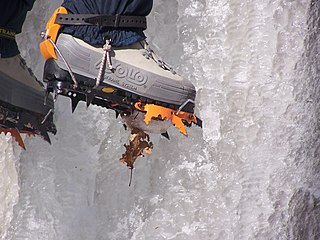
A crampon is a traction device attached to footwear to improve mobility on snow and ice during ice climbing. Besides ice climbing, crampons are also used for secure travel on snow and ice, such as crossing glaciers, snowfields and icefields, ascending snow slopes, and scaling ice-covered rock.
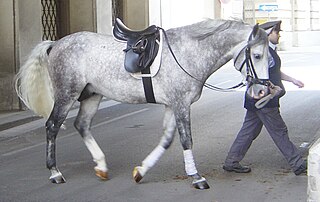
English saddles are used to ride horses in English riding disciplines throughout the world. The discipline is not limited to England, the United Kingdom in general or other English-speaking countries. This style of saddle is used in all of the Olympic and International Federation for Equestrian Sports (FEI) equestrian disciplines, except for the newly approved FEI events of equestrian vaulting and reining. Most designs were specifically developed to allow the horse freedom of movement, whether jumping, running, or moving quickly across rugged, broken country with fences. Unlike the western saddle or Australian Stock Saddle, there is no horn or other design elements that stick out above the main tree of the saddle.
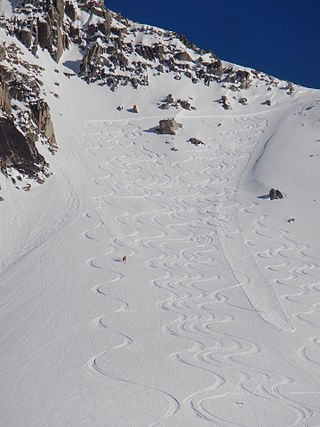
Backcountry skiing (US), also called off-piste (Europe), alpine touring, freeriding or out-of-area, is skiing in the backcountry on unmarked or unpatrolled areas either inside or outside a ski resort's boundaries. This contrasts with alpine skiing, which is typically done on groomed trails benefiting from a ski patrol. Unlike ski touring, backcountry skiing can – and often does – include the use of ski lifts including snowcats and helicopters. Recent improvements in equipment have increased the popularity of the sport. As the sport does confront the individual practicing it with the dangers of natural, unprepared alpine terrain like avalanches, it is generally recommended to carry standard safety equipment and to learn beforehand how to behave safely under such conditions.

Motorcycle boots are associated with motorcycle riders and range from above ankle to below knee boots. They have an outside of a typical boot but a low heel to control the motorcycle. To improve motorcycle safety, motorcycle boots are generally made from a thick, heavy leather and may include energy absorbing and load spreading padding, metal, plastic and/or composite materials to protect the motorcycle rider's feet, ankles and legs in an accident. For use in wet weather, some boots have a waterproof membrane lining such as Gore-Tex or SympaTex.

Combat or tactical boots are military boots designed to be worn by soldiers during combat or combat training, as opposed to during parades and other ceremonial duties. Modern combat boots are designed to provide a combination of grip, ankle stability, and foot protection suitable for a rugged environment. They are traditionally made of hardened and sometimes waterproofed leather. Today, many combat boots incorporate technologies originating in civilian hiking boots, such as Gore-Tex nylon side panels, which improve ventilation and comfort. They are also often specialized for certain climates and conditions, such as jungle boots, desert boots, and cold weather boots as well as specific uses, such as tanker boots and jump boots.
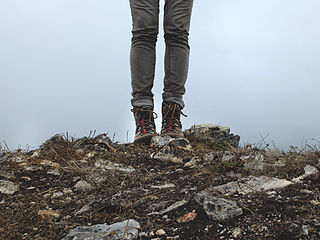
Hiking (walking) boots are footwear specifically designed for protecting the feet and ankles during outdoor walking activities such as hiking. They are one of the most important items of hiking gear since their quality and durability can determine a hiker's ability to walk long distances without injury. Hiking boots are constructed to provide comfort for walking considerable distances over rough terrain. Boots that protect the hiker's feet and heel are recommended. Hiking boots give ankle support and are fairly stiff. A less popular alternative is to use light trainers with thin soles. Footwear should be neither too loose nor too tight, to help prevent blisters and sore feet. Hiking socks that wick sweat from the feet, provide warmth, and cushion the feet are recommended and a thin, inner sock may also help. Most hiking boots are also designed for other outdoor activities such as backpacking, climbing, mountaineering, and hunting.

Mountaineering, expedition or high altitude boots are a type of footwear used in mountain climbing. They are designed specifically for moving over harsh terrain.
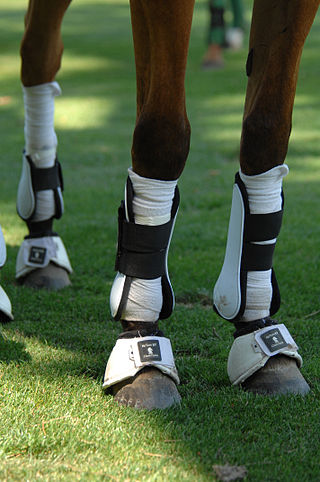
Leg wraps and boots are used for the protection of the lower legs of horses during training, shipping, and exercise, as well as for therapeutic and medical purposes to provide support for injuries or coverage of wounds. Boots are manufactured as a single unit to be applied to the leg with straps, and wraps are long elastic bandage material wrapped around and around the legs.
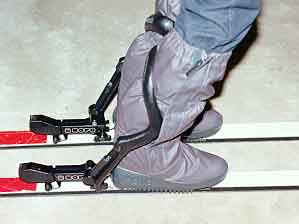
The Nava System was a ski binding and custom ski boot offered for sale in the 1980s. The system used a combination of flexible sole plate to keep the boot centered, and a spring-loaded plastic arm on the rear binding that was used to transmit sideways motions of the leg to the ski. This eliminated the need for a hard shell on the boot; the Nava boot was soft and resembled a knee-high winter boot. In spite of numerous endorsements by racing stars, the system never caught on and sales ended by the late 1980s.

Look's Nevada, released in 1950, was the first recognizably modern alpine ski binding. The Nevada was only the toe portion of the binding, and was used with a conventional cable binding for the heel. An updated version was introduced in 1962 with a new step-in heel binding, the Grand Prix. These basic mechanisms formed the basis for LOOK bindings for over 40 years, changing mainly in name and construction materials. The Nevada toe pattern is almost universal among bindings today.
Hanson Industries invented and popularized the rear-entry ski boot. Formed by brothers Chris and Denny Hanson in 1969, the company became a huge success in the late 1970s. A series of missteps in the early 1980s led to a rapid death spiral and the company went bankrupt in 1984. It was purchased by Daiwa, a Japanese fishing tackle company that handled Hanson's distribution in Japan. Daiwa ended sales in North America and Europe. European products, notably the famous Salomon SX series, used Hanson's exit as a springboard to market domination during the second half of the 1980s. Denny Hanson later introduced the "Apex" design, which combines features of alpine and snowboarding boots.
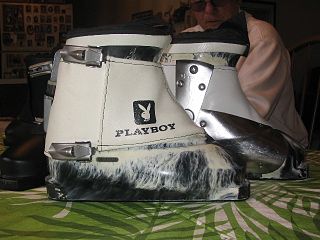
Rosemount Ski Boots introduced one of the earliest all-plastic ski boots for the downhill skiing market, competing with Bob Lange for the title of "first". Rosemount's design was easily distinguished by its use of the uncommon "side-entry" method for putting the boot on, which was rare at the time and is no longer used.

Lange is a major producer of ski boots used in alpine (downhill) skiing, founded in 1948 in the USA. They introduced the world's first plastic ski boots in 1962, and a greatly improved model aimed at the racing market in 1965. After several World Cup and Olympics wins in 1967 and 1968 made them a must-have on the circuit, Lange has remained a force in the racing market ever since. Their boots have equipped five times as many World Cup medal winners as any other brand into the 2000s. The front-entry design introduced by Lange is used by almost every modern ski boot to this day. Lange remains a major brand worldwide.

The Flexon was a downhill ski boot introduced by Raichle in the winter of 1980/81. Based on designs by Sven Coomer, Al Gross and Erik Giese, the Flexon used a unique system to control forward flex in a predictable way, as well as making the boot more comfortable and easier to put on and remove. The basic layout was, and is, generally referred to as a "three-piece" design -- three-piece boots preceding the Flexon included the Henke Strato, Nordica Comp 3 and a dozen other designs from Italian bootmakers.
This glossary of skiing and snowboarding terms is a list of definitions of terms and jargon used in skiing, snowboarding, and related winter sports.















